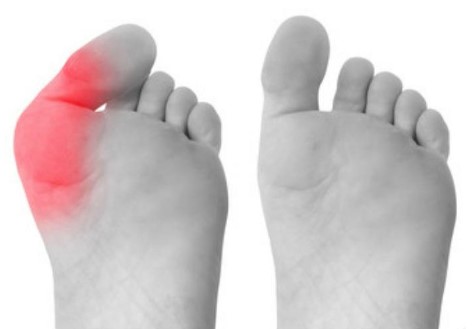Say Goodbye to Bunion Pain with Minimally Invasive Surgery?
Say Goodbye to Bunion Pain with Minimally Invasive Surgery?

Bunions can be a real pain – quite literally. They can make even the simplest tasks, like walking or wearing shoes, excruciatingly uncomfortable. For those suffering from bunions, finding relief becomes a top priority. Thankfully, advancements in medical technology have paved the way for minimally invasive surgery, offering a ray of hope for those seeking effective treatment. In this comprehensive guide, we’ll delve into the world of minimally invasive bunion surgery, exploring its benefits, procedures, and frequently asked questions.
Understanding Bunions
Bunions are bony bumps that develop on the joint at the base of the big toe. They form when the big toe pushes against the adjacent toe, causing the joint to enlarge and protrude. This misalignment of the joint can lead to inflammation, pain, and difficulty in walking.
Traditional vs. Minimally Invasive Surgery
Traditional bunion surgery involves making a large incision near the affected joint, removing the bony protrusion, and realigning the toe. While effective, this approach often requires a lengthy recovery period and can result in visible scarring. On the other hand, minimally invasive bunion surgery utilizes small incisions and specialized instruments to correct the deformity with minimal disruption to surrounding tissues.
Benefits of Minimally Invasive Surgery
Minimally invasive bunion surgery offers several advantages over traditional methods, including:
- Smaller incisions mean less scarring and faster healing.
- Reduced risk of complications such as infection and nerve damage.
- Quicker recovery time, allowing patients to return to normal activities sooner.
- Minimal disruption to surrounding tissues, resulting in less pain and swelling.
The Procedure
During minimally invasive bunion surgery, the surgeon makes small incisions near the bunion and inserts specialized instruments to realign the toe joint. Using advanced imaging techniques, such as fluoroscopy, the surgeon can visualize the procedure in real time, ensuring precise correction of the deformity. Once the joint is realigned, tiny screws or pins may be used to stabilize the bone while it heals.
Eligibility for Minimally Invasive Surgery
Not all bunions are suitable for minimally invasive surgery. Factors such as the severity of the deformity, underlying health conditions, and the presence of arthritis may influence candidacy. A thorough evaluation by a qualified podiatric surgeon is essential to determine the most appropriate treatment approach for each individual.
Recovery and Rehabilitation
Recovery from minimally invasive bunion surgery is typically faster and less painful compared to traditional methods. Patients may experience some discomfort and swelling initially, but this usually resolves within a few weeks. Physical therapy and exercises may be recommended to restore strength and flexibility to the toe joint.
Cost and Insurance Coverage
The cost of minimally invasive bunion surgery can vary depending on factors such as the surgeon’s experience, the location of the procedure, and any additional services required. It’s important to check with your insurance provider to determine coverage and any out-of-pocket expenses.
Choosing the Right Surgeon
When considering minimally invasive bunion surgery, it’s crucial to choose a skilled and experienced podiatric surgeon. Look for a surgeon who specializes in minimally invasive techniques and has a track record of successful outcomes.
Frequently Asked Questions
Q: Is minimally invasive bunion surgery painful?
A: While some discomfort is normal after surgery, it is generally less severe compared to traditional methods. Pain medication and icing can help manage any discomfort during the recovery period.
Q: How long does it take to recover from minimally invasive bunion surgery?
A: Recovery times vary depending on the individual and the extent of the surgery. However, most patients can expect to return to normal activities within a few weeks to a few months.
Q: Will I have visible scars after minimally invasive surgery?
A: The incisions made during minimally invasive surgery are small and typically heal well, resulting in minimal scarring.
Conclusion
Minimally invasive bunion surgery offers a promising solution for those suffering from bunion pain. With smaller incisions, reduced recovery time, and fewer complications, it’s no wonder why many patients are turning to this innovative approach for relief. If you’re struggling with bunions, don’t let pain hold you back any longer – explore the option of minimally invasive surgery and take the first step towards healthier, happier feet.
By opting for minimally invasive bunion surgery, you can bid farewell to bunion pain and reclaim your mobility and comfort. Contact the Foot and Ankle Center of Arizona today to learn more about this cutting-edge procedure and schedule a consultation with Dr. Kris A. DiNucci, our expert podiatric foot and ankle surgeon. Say goodbye to bunions and hello to a brighter, pain-free future!








